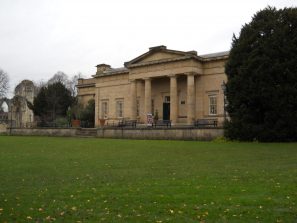A major shift in Business Rates valuation for museums
Colin Hunter, business rates director at national commercial property consultancy Lambert Smith Hampton (LSH), talks about the significance of the latest business rates ruling for museums.
A matter of reasonableness
A property’s rateable value – which is used to determine its business rates liability – is intended to reflect the reasonable rent that a tenant would be willing to pay on the open market.
In the case of museums and other specialist properties where no rent is paid, the cost of constructing the building – commonly known as the contractor’s method – is deemed by the Valuation Office Agency (VOA) to be a reasonable guide.
However, it has long been argued that using the contractor’s method for historic properties is neither fair nor reasonable, owing to the fact that it produces a dramatically higher rateable value than the alternative valuation method of receipts and expenditure, which has regard to the trading potential and the cost of running the property.
The choice of valuation method is determined by the VOA, which is tasked with setting and maintaining fair and reasonable rateable values. Yet, despite its industry-wide condemnation, almost 50% of all museums across England and Wales are still valued using the contractor’s method.
An inconsistent approach
I have been advising York Museum and Gallery Trust (YMT) in respect of its appeals against the VOA’s use of the contractor’s method for several years.
The specific properties that the appeals referred to were all historic, listed buildings in York occupied and run by YMT and its wholly owned subsidiary York Museums and Enterprises Ltd (YME), and included the iconic Castle Museum, Yorkshire Museum which includes the ruins of St Mary’s Abbey, York Art Gallery and the former St Mary’s Church, known as the Heritage Centre.
In February 2017, a total of eight appeals were brought against the VOA by the YMT in a single case heard by the Upper Tribunal (Lands Chamber). The hearing lasted five days and covered complex legal and valuation arguments, with the VOA defending its use of the contractor’s method despite evidence of an inconsistency in its approach, with many other museums benefitting from low rateable values.
Throughout the appeal process, the VOA also argued strongly that if a museum has a separate trading company (as recommended by the Charity Commission), then that company must be in occupation of the shops, cafés and wedding venues, and should therefore be separately assessed.
Not only would this hard line approach have significantly increased the YMT’s total Rateable Value, it would also have meant that charitable relief and discretionary relief would not be available for shops, cafés and wedding or conference venues – a decision which would have impacted other museums which have followed the Charity Commission guidance.
Aligned interests
On 23 May 2017, after several months of deliberation, the Upper Tribunal published its decision, ruling primarily in favour of YMT.
The reasoning being that the aims of the YMT and YME were wholly aligned and so in areas shared between the two, there was no conflict and YMT were indeed the rateable occupiers, save for the small “shop” at Yorkshire Museum which, at the dates for the appeals of 1 April 2010, was divided from the rest of the museum by a set of doors and was served by a dedicated retail counter and till. As this space was wholly retail, it was considered that there was no shared occupation and that the shop should therefore be viewed as being in the occupation of YME and separately assessed. The impact of this is a backdated liability of around £15,000, which might be further reduced.
The decision therefore provides guidance for how other museums can avoid having their shops and cafés separately assessed and also sets the boundaries for situations where the VOA will be able to split out the shops and cafés.
It is worth noting however, that if a café is run by a concessionaire then normally the concessionaire’s occupation will be ignored and the café will remain part of the main assessment.
The Upper Tribunal came down firmly against the use of contractor’s method of valuation for YMT’s properties, confirming a rateable value of £1 for the Yorkshire Museum – a hidden gem with modest visitor numbers high maintenance costs owing to its Grade II Listed garden, and a range of Grade I Listed buildings including the ruins of St Mary’s Abbey, York Observatory and the Multangular Tower, the lower courses of which are Roman remains. In contrast, Castle Museum, which is the jewel in the crown for YMT and has higher visitor numbers, was set a much higher rateable value of £183,000, which reflects not just its turnover but the surplus the property is capable of generating.
Hope for other museum operators
Over 700 museums across England and Wales now potentially stand to gain as a result of the decision – particularly those which have seen large increases in Rateable Values following the Revaluation (click here to see an LSH infographic giving the changes by region).
Properties will not automatically be reassessed and, as the decision for Castle Museum demonstrates, museums can have legitimately high values so ratepayers are strongly advised not to appeal without first seeking professional advice from a qualified Chartered Surveyor.
Ratepayers that have not already appealed against the 2010 Rating List or are dissatisfied with the outcome of a previous appeal can, based on this decision, make backdated appeals against the 2010 Rating List, as long as they are lodged by 30 September 2017.
A copy of the Decision of the Upper Tribunal can be found here. Charities and museum owners may also be interested to visit LSH’s website.
Colin Hunter MRICS IRRV
T: 0113 887 6758
